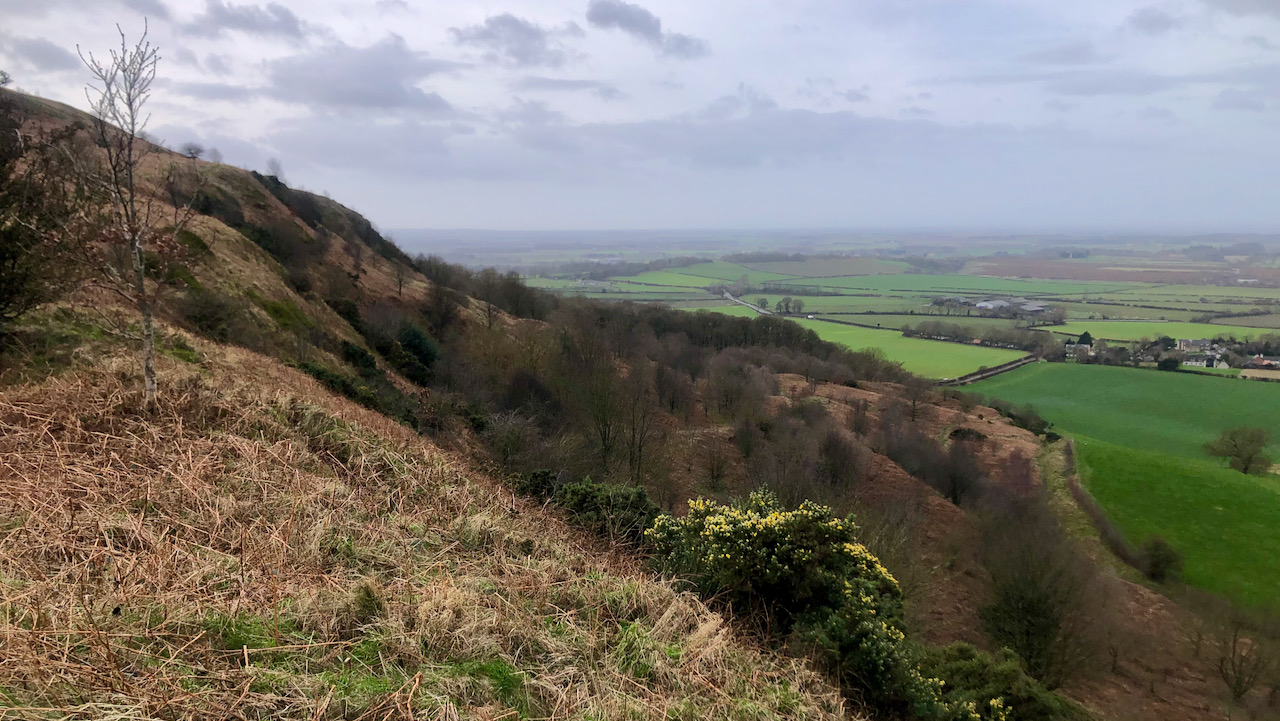Best viewed on the approach from the direction of Guisborough, Roseberry Topping boasts a conspicuous shelf around the 200-metre mark called Cockle Scar. Like a tiered cake, it is the top edge of the sandstone stratum recognised by geologists as the Staithes Formation.
In his memoirs, ‘Half a Century of Sport,’ Sir Alfred Pease, a member of the family of Quaker industrialists, makes reference to Cockle Scar1Pease, Sir Alfred. ‘Half a Century of Sport’. Page 171/2. John Lane The Bodley Head Ltd. 1932.:
“There was a man out, a stranger to me, on a roan horse; I think he came out from Middlesbrough. I was hurrying down Roseberry by a steep track called Cat Trod and saw this man’s horse run away with him high up on the hill and take him at racing pace down the mountain to the precipitous escarpment below, called Cockle Scar.
“Over the cliff they went. The first twenty feet was a fall in the air. The man and horse parted at the first bump, then both rolled and somersaulted, over and over, to the bottom of the Scar, and the horse rolled over the lower slopes beyond the cliff bottom. I was certain they were both killed, but to my amazement the man got on to his feet and went down to his horse.
“As I got to them the horse, too, got on to his legs.
He had not a broken bone, though he had scores of cuts and scratches and had more hair scraped off him than left on. The man said he was “All right,” so I continued the chase. I never saw either out again, and if a cropper could knock the love of hunting out of a man that one should have done the trick. It was the most extraordinary escape from death I ever saw, and really an awful thing to look on at.”
Pease’s definition of ‘sport‘ necessarily involved the killing of some unfortunate creature, be it big game on safari in Africa or the unassuming fox gallivanting on the hills and plains of Cleveland. His subtle allusion to the ‘chase’ unmistakably aligns with the genteel pursuit of fox hunting. Consequently, the entirety of this literary work induces a somewhat discomfiting reading experience, yet, for the sake of local interest, I shall graciously overlook his peculiar predilection.
One of these occasional interests pertains to his casual reference to ‘Cat Trod’. I wonder where that was.
The northerly of the three Public Footpaths ascending Cockle Scar retains the name Brant Gate on the O.S. map, albeit probably with limited knowledge among the walkers and runners using it. ‘Brant‘ is an old Cleveland dialect meaning ‘steep’—a term actually translates as the same in modern Swedish, thus revealing its Scandinavian etymology. The southernmost path, recently upgraded with new steps courtesy of the National Trust, emerges as a likely contender for Cat Trod.
There exists, of course, a third Public Footpath, positioned approximately midway between the two, making the most direct ascent of the scar. Today, it is completely obscured by overgrowth and is impassable. Is it plausible that this is the Cat Trod? Considering Pease was on a horse, it appears improbable. I have complete equine naivety, but surely, one could not cajole even the most adept hunter to descend such a precipice.
- 1Pease, Sir Alfred. ‘Half a Century of Sport’. Page 171/2. John Lane The Bodley Head Ltd. 1932.

Leave a Reply